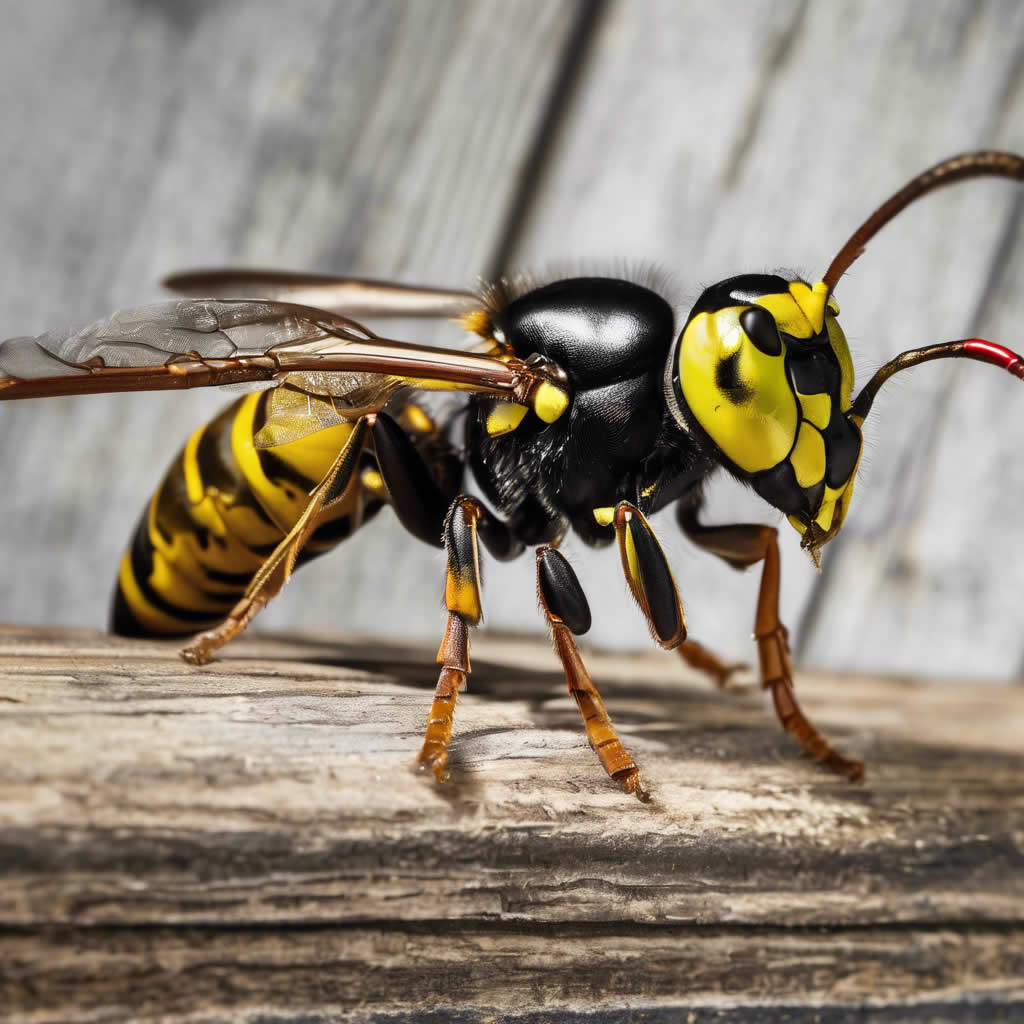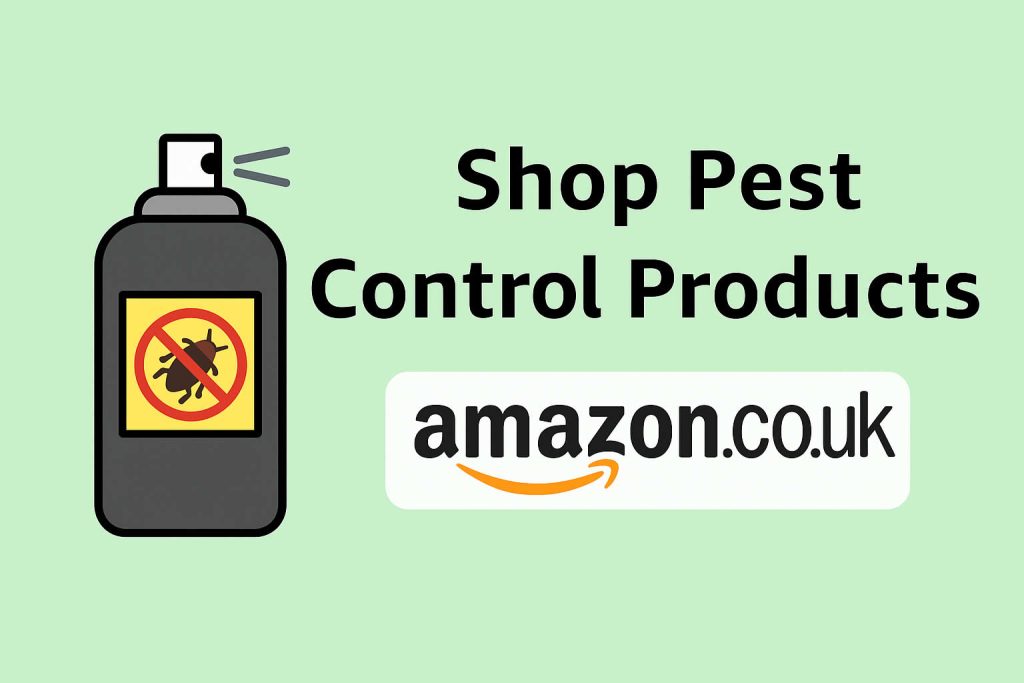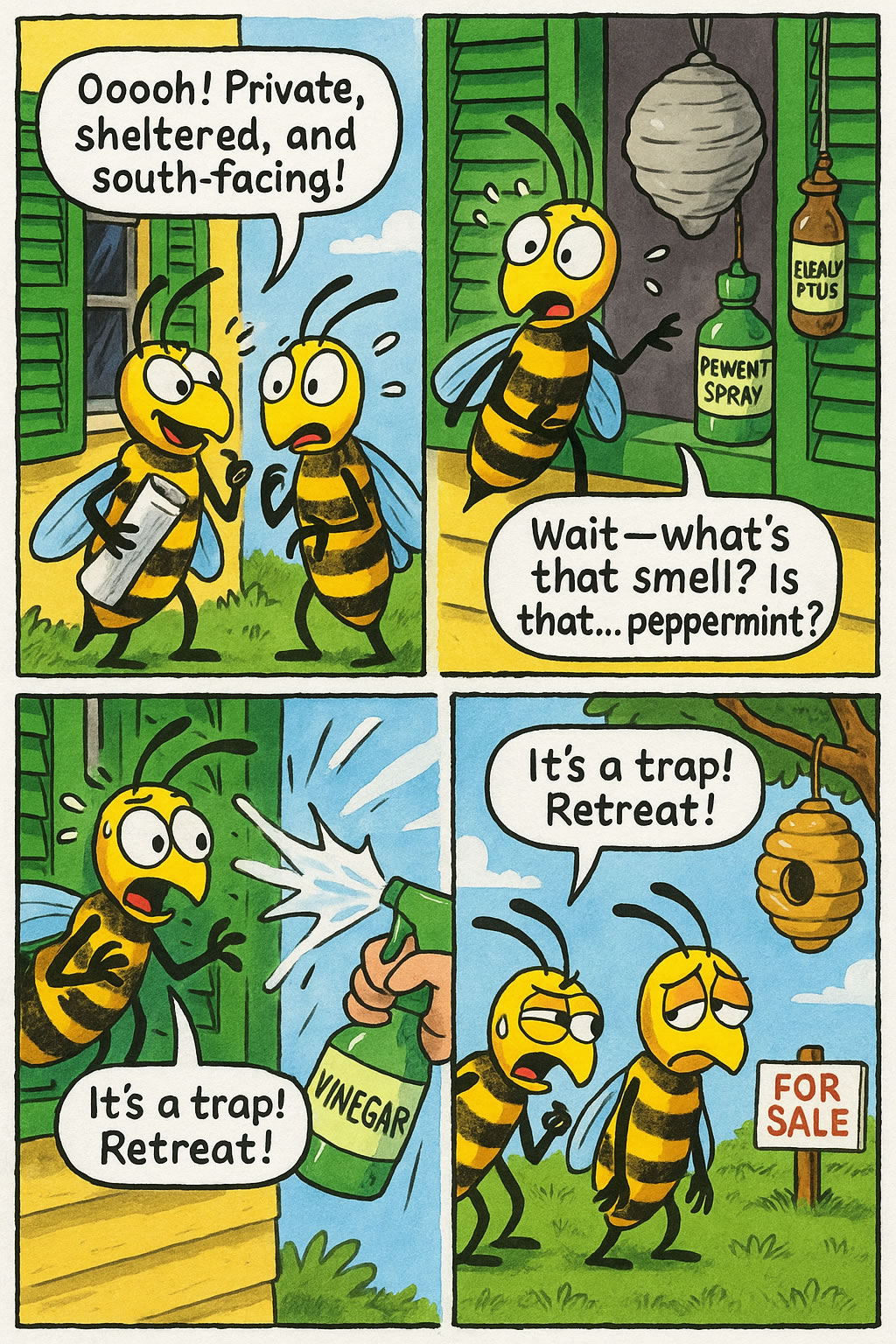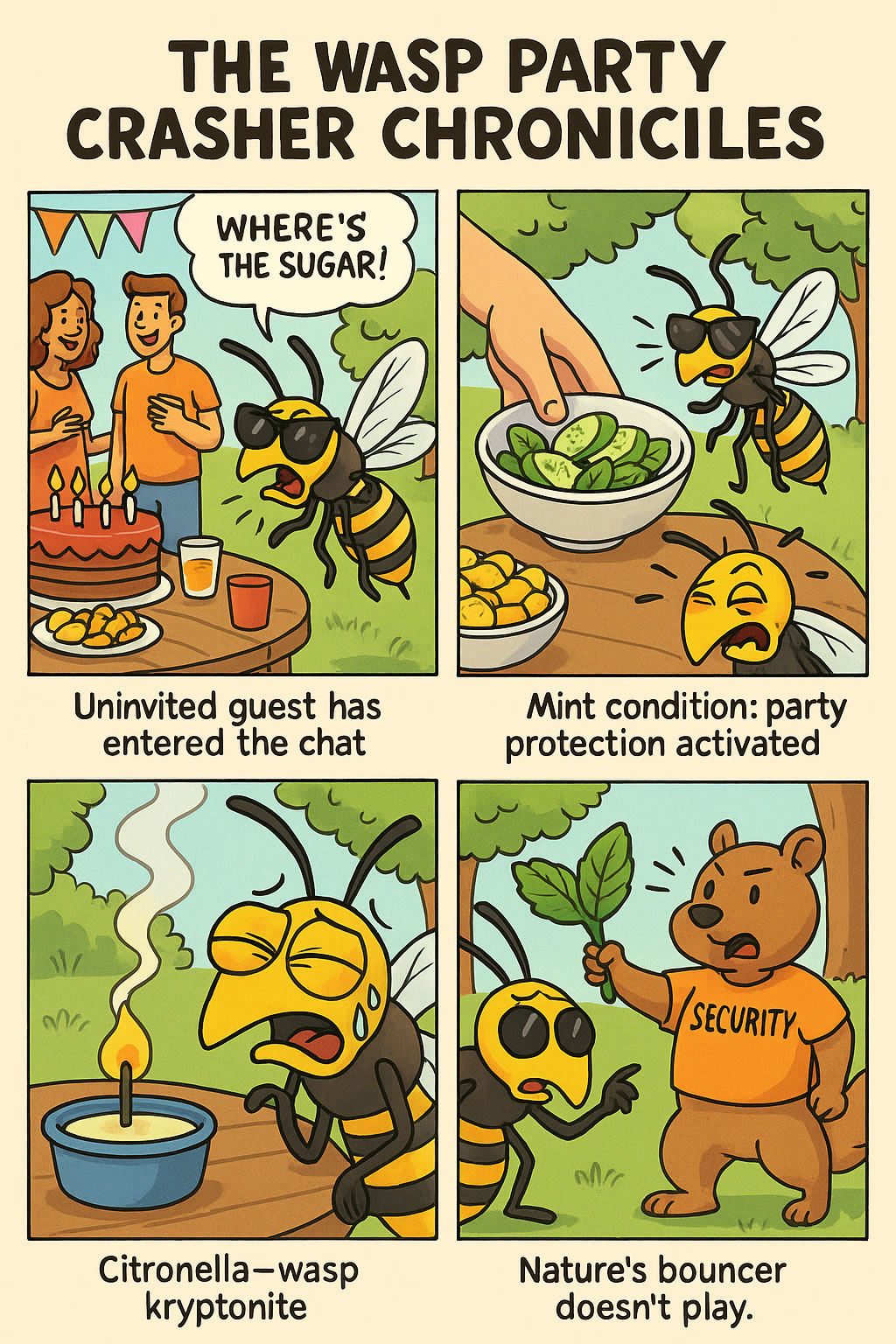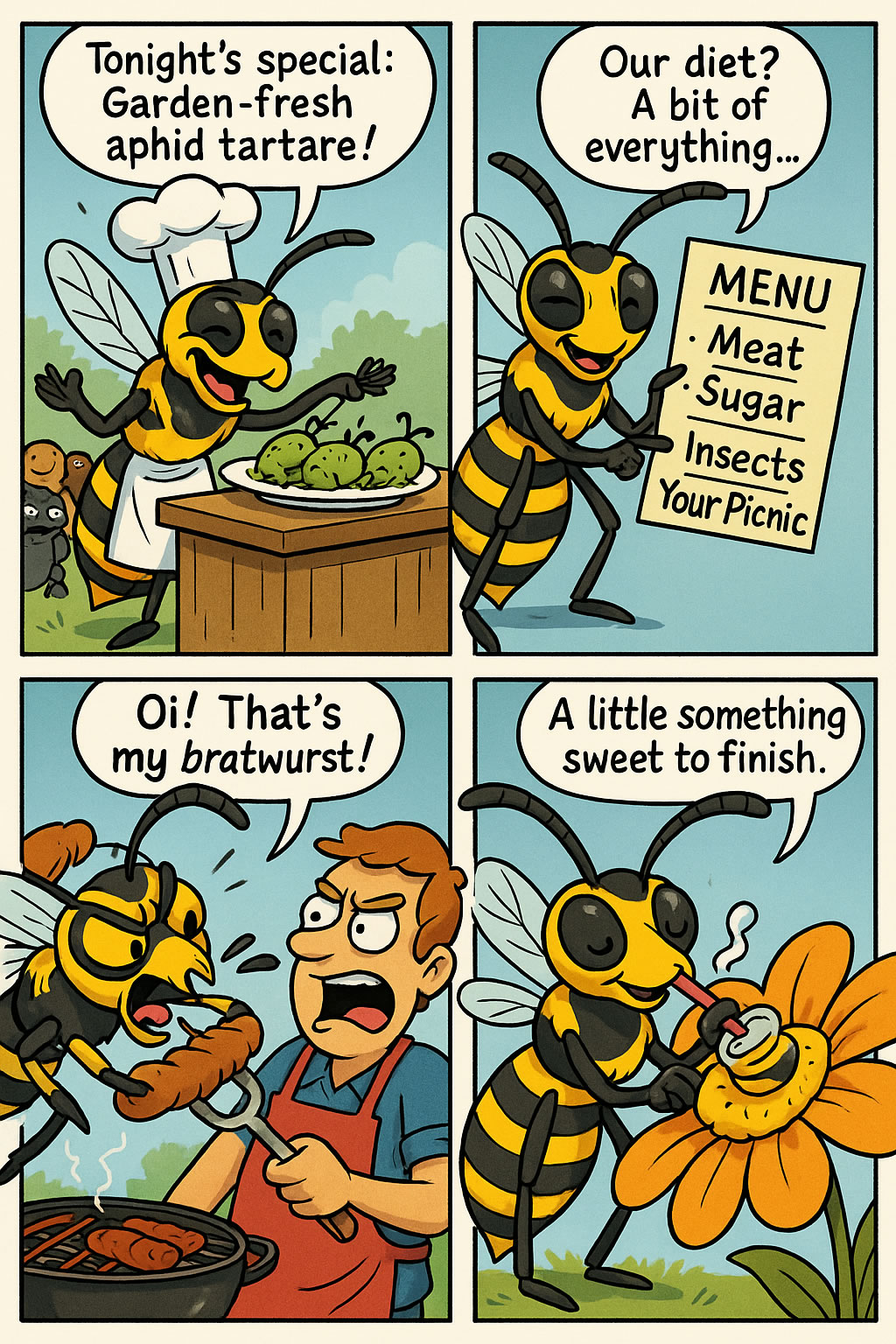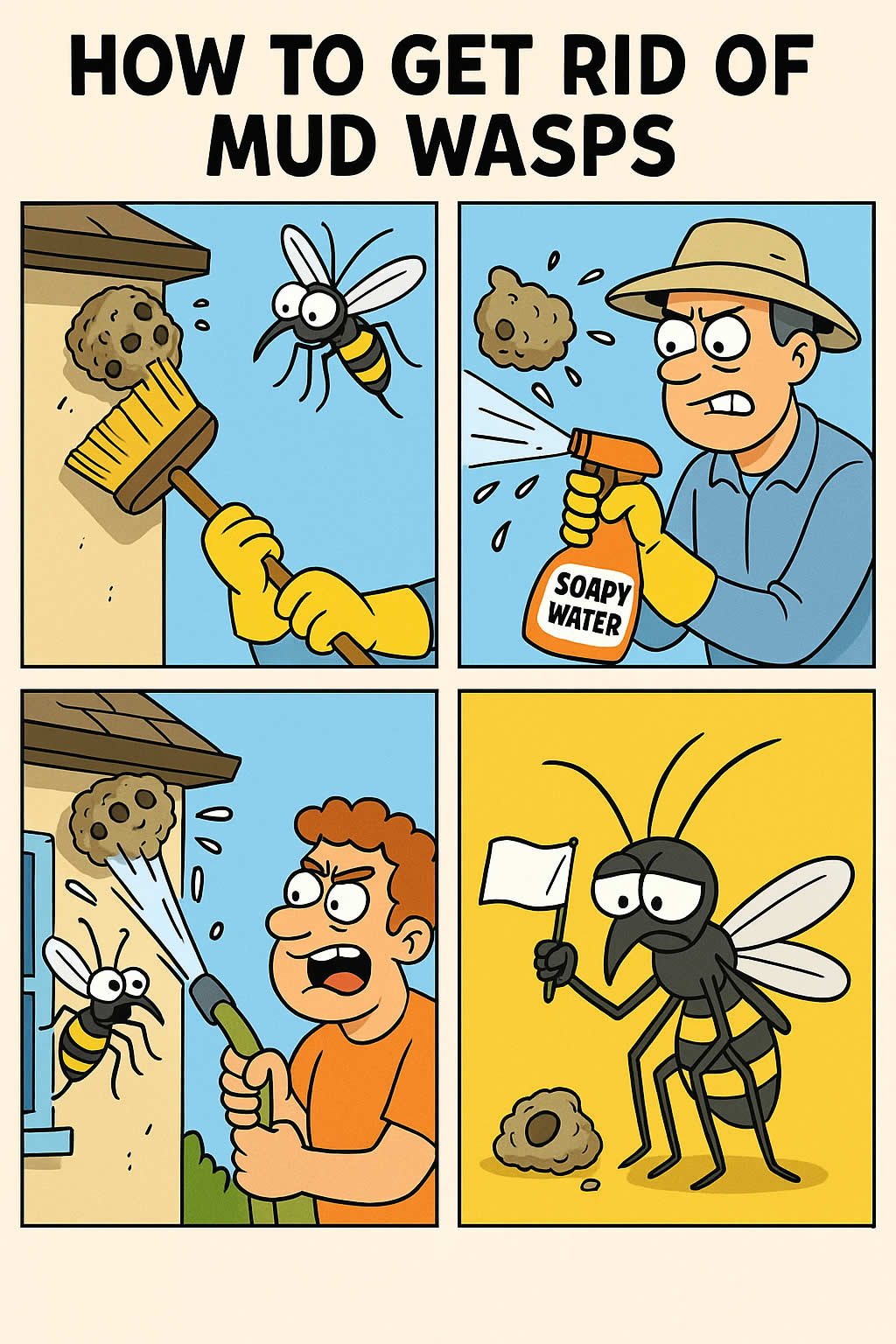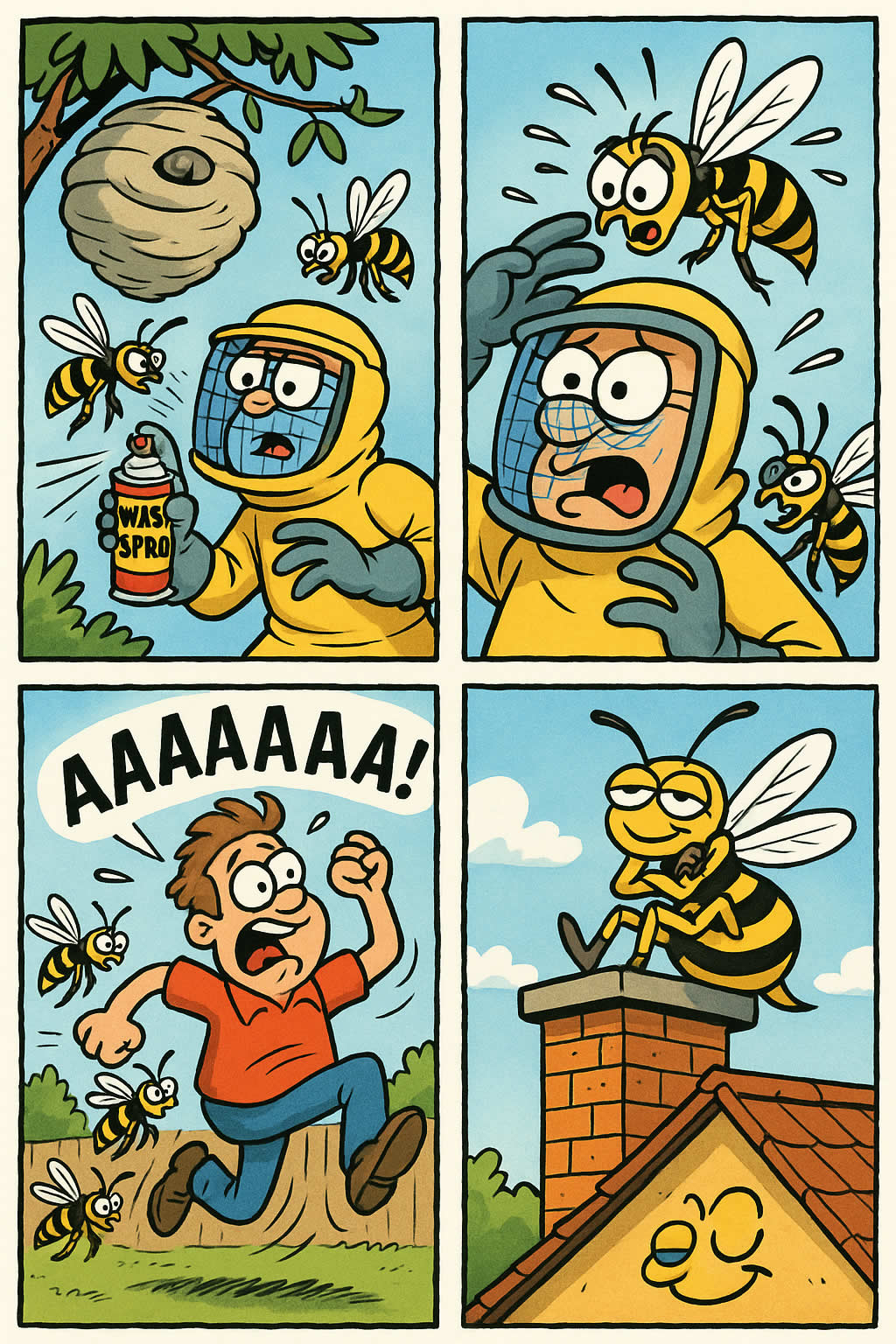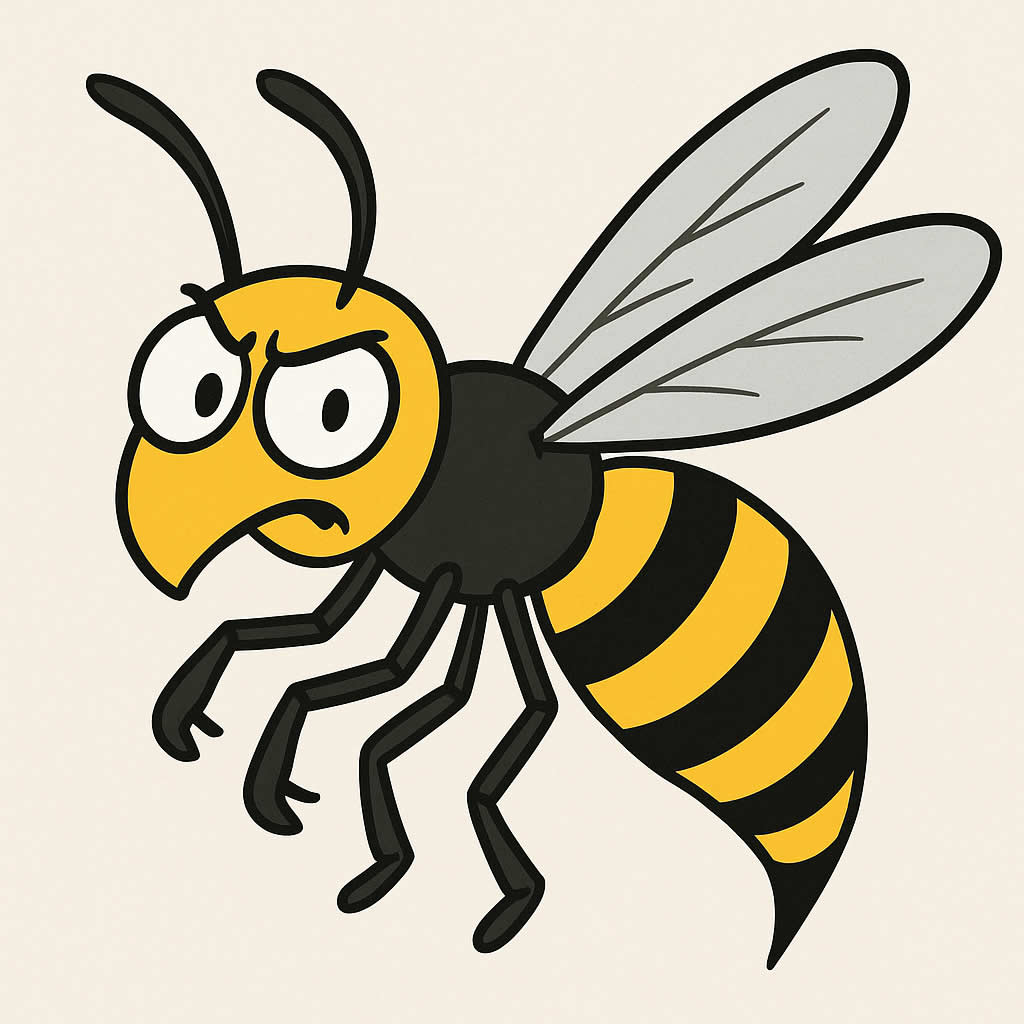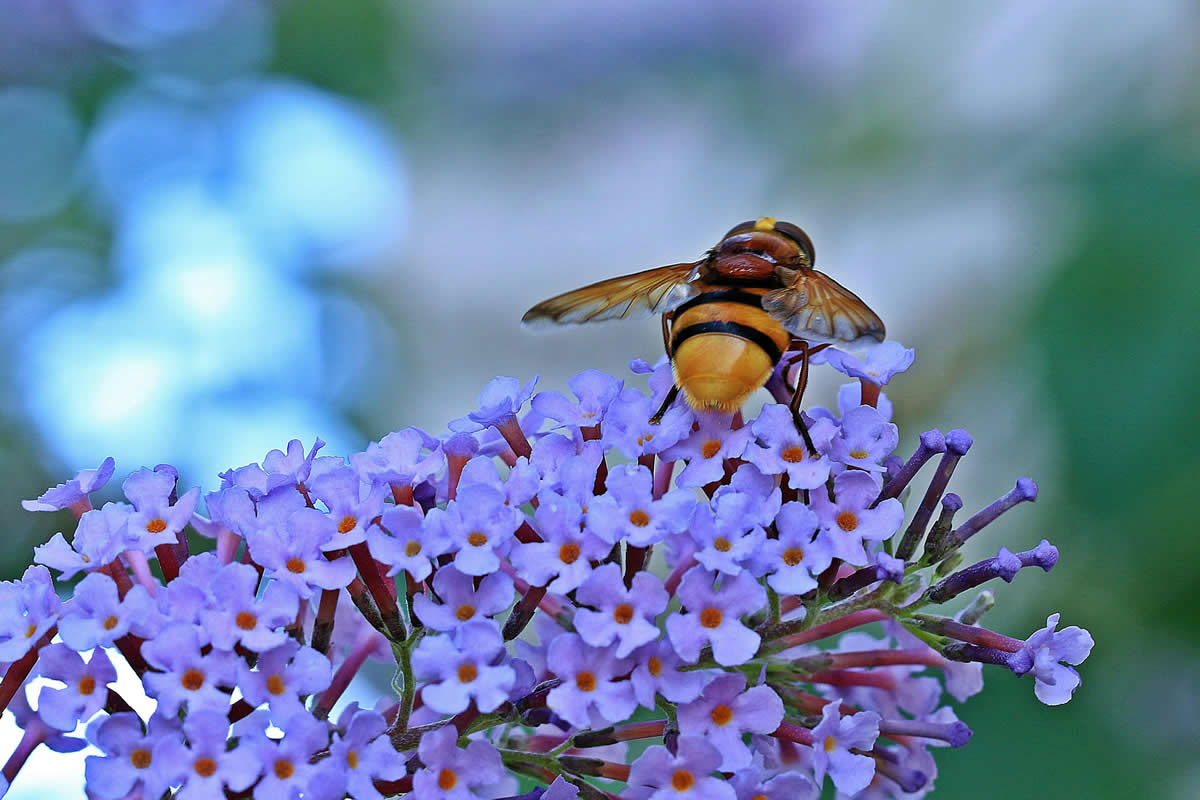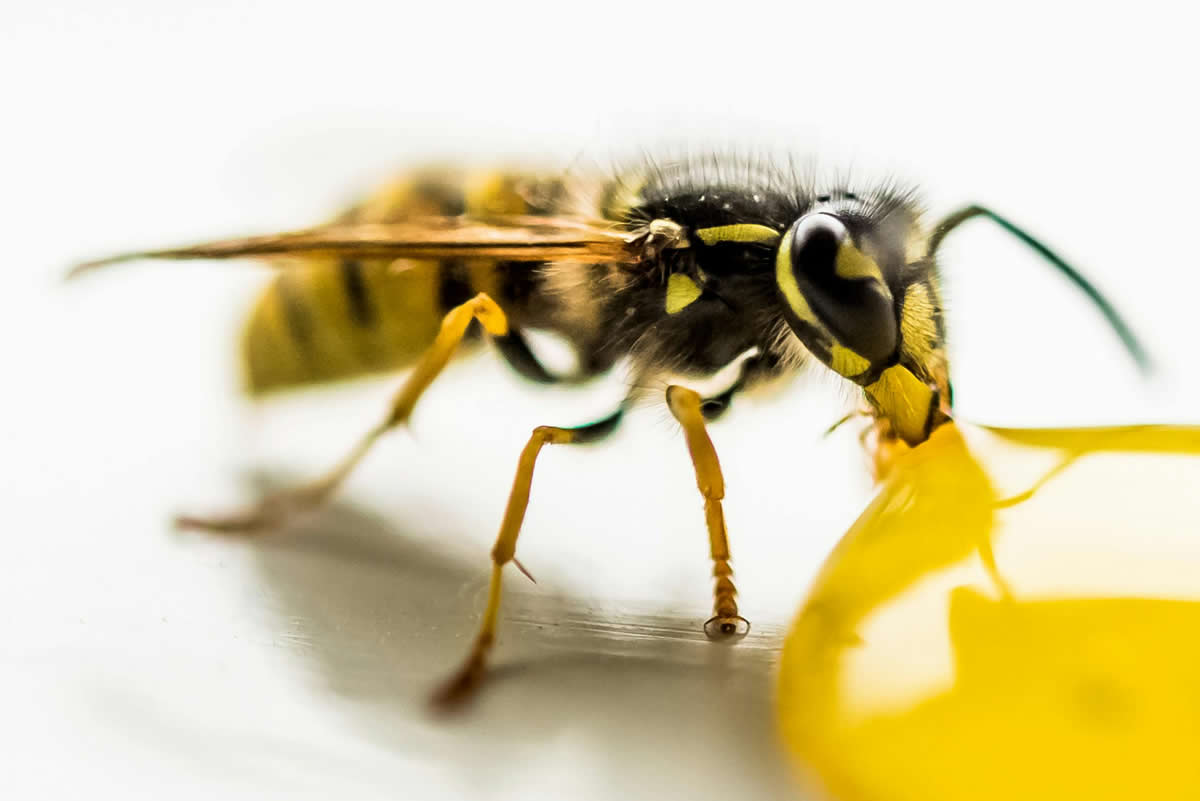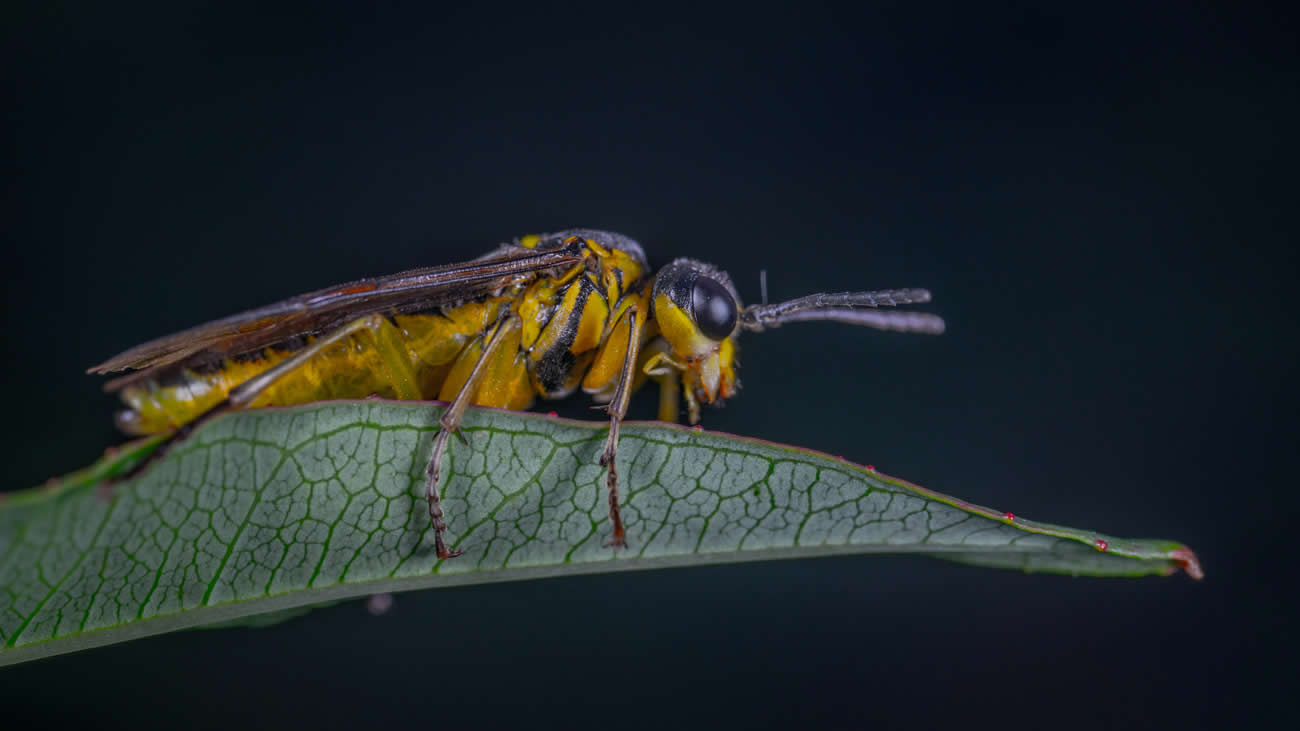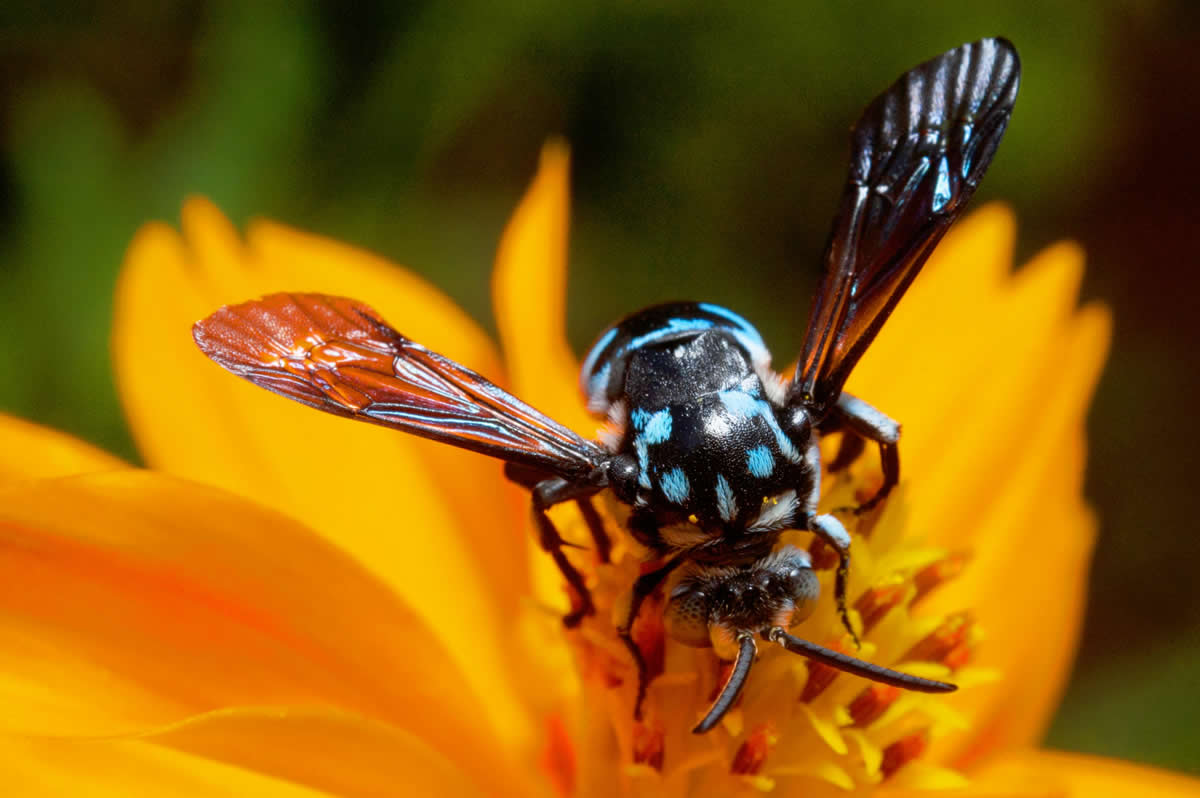Related Queries
ToggleDid you know that queen wasps are nearly twice the size of regular wasps, measuring an impressive 19mm compared to their workers’ 12mm? Should I kill a queen wasp is a question many of us face when spotting these larger insects, particularly during spring.
However, the answer isn’t as straightforward as you might think. While killing a queen wasp in early spring could prevent a colony from forming, it could also trigger aggressive responses from worker wasps if attempted during summer. By mid-summer, the queen’s role changes completely – she stops foraging and focuses solely on nursing and egg production.
We often spot queen wasps in our homes during winter and early spring, when they’re the sole survivors of their colonies. Understanding when and how to handle these encounters is crucial, as making the wrong decision could either lead to unnecessary harm or a full-blown wasp infestation. Let’s explore the facts to help you make the right choice.
When You Find a Queen Wasp
Spotting a queen wasp requires careful observation and understanding of their behaviour patterns. These larger insects emerge from hibernation as spring arrives, actively searching for suitable locations to establish their colonies.
Common Indoor Locations
Queen wasps frequently seek shelter in our homes, specifically targeting areas that offer protection and stability. They show a strong preference for:
- Lofts and attics, which provide undisturbed spaces
- Wall cavities and crevices that offer protection from elements
- Behind large furniture pieces and window frames
- Garden sheds and garages where wood materials are readily available
Once inside, these resourceful insects begin harvesting wood from fences or furniture, mixing it with their saliva to create paper-like building material. The queen then constructs a small nest resembling a golf ball, containing 10-20 egg chambers.
Signs It’s Actually a Queen
Identifying a queen wasp involves looking for specific characteristics that set them apart from worker wasps. A queen measures approximately 2.5cm in length, nearly double the size of regular wasps. Additionally, their presence follows a distinct seasonal pattern:
Firstly, timing plays a crucial role in identification. Queens are the only wasps visible in late autumn or early spring. Moreover, these solitary insects emerge from hibernation around March, depending on climate conditions.
The queen’s behaviour also serves as a telling indicator. Initially, she works alone to establish the nest foundation. After laying the first batch of eggs, she remains within the nest, focusing solely on egg production – laying up to 1,000 eggs daily.
The queen’s role extends beyond reproduction. She maintains colony defence by secreting special fluids that protect developing larvae from predators and parasites. Furthermore, she patrols the nest area, ready to alert other members about potential threats.
Nevertheless, warm winters pose a significant threat to hibernating queens. Early awakening due to unseasonable temperatures often leads to starvation, as food sources remain scarce. Therefore, queens specifically seek locations that shield them not only from temperature fluctuations but additionally from humidity and predators.
Understanding the Risks
Encountering a queen wasp raises valid concerns about safety and environmental impact. Understanding these risks helps in making informed decisions about handling these insects.
Threat to Humans and Pets
Queen wasps possess a powerful defence mechanism – their sting, which includes two small barbs at the tip. The first barb stabilises the target, whilst the second injects venom with precision. Although queen wasps sting only in self-defence, their stings can be particularly dangerous in certain situations.
For pets, wasp stings pose serious risks. Cats and dogs might experience allergic reactions, and in rare cases, can go into anaphylactic shock without immediate treatment. Multiple stings or stings to sensitive areas like the throat, mouth, or neck require urgent veterinary attention.
The risks escalate in these scenarios:
- When disturbing hibernating queens, as they remain capable of stinging even during dormancy
- For individuals with allergies, where stings can trigger severe reactions
- In cases of multiple stings, which can be life-threatening
Impact on Local Ecosystem
Before considering elimination, it’s crucial to understand the queen wasp’s vital role in maintaining ecological balance. These insects contribute significantly to natural pest control and environmental stability in several ways:
Social wasps capture approximately 14 million kilograms of insect prey each summer in the UK alone. This remarkable feat helps control populations of garden pests, including caterpillars and greenfly. Without wasps, our environment could face serious imbalances, potentially leading to insect overpopulation.
Yet, their impact can vary depending on location. In areas where wasps are non-native, such as New Zealand, their voracious appetite for insects can disrupt local ecosystems. In their natural habitat, nonetheless, wasps serve as:
- Essential pollinators for early-flowering crops
- Natural pest controllers in gardens and agricultural settings
- Key players in maintaining insect population balance
Despite their defensive nature, queen wasps typically sting only when threatened. Their venom produces similar effects to worker wasps, causing swelling, redness, and pain. Rather than viewing them solely as pests, recognising their ecological significance helps in making balanced decisions about their management.
Better Alternatives to Killing
Instead of reaching for harmful solutions, several effective alternatives exist for managing queen wasps around your property. These methods ensure both your safety and environmental preservation.
Prevention methods
Securing your home against queen wasps starts with thorough inspection and maintenance. Seal all potential entry points, focusing on cracks around window frames, door frames, and power line entry points. For optimal results, complete these tasks in late autumn or early spring.
Essential preventive measures include:
- Installing secure bin lids with bungee cords for proper waste containment
- Removing fallen fruit promptly from garden areas
- Keeping food and drinks covered when outdoors
- Maintaining clean and sealed compost areas
Natural deterrents
Nature offers numerous effective solutions for deterring queen wasps. Several aromatic plants serve as natural repellents, accordingly to gardening experts. These include:
Proven Plant Deterrents: Spearmint, thyme, citronella, and eucalyptus effectively repel wasps from your garden. Mint plants, in particular, demonstrate remarkable effectiveness, yet require containment in planters to prevent spreading.
Ground coffee presents another natural solution – burning it like incense creates an environment wasps actively avoid. Likewise, essential oils offer promising results, especially a mixture of clove, lemongrass, and geranium oils.
Professional removal options
At times, professional intervention becomes necessary, especially for nests in challenging locations. Professional pest controllers offer several advantages:
- Complete wasp nest removal within 30-45 minutes
- Guaranteed service within two working days
- Access to specialised equipment and treatments
- BPCA certification ensuring proper handling
Importantly, professional services employ the latest techniques and products unavailable to the public. They possess protective equipment and technical knowledge essential for safe nest removal. For optimal results, seek services from BPCA member companies, ensuring qualified technicians handle the situation.
Remember, attempting DIY removal might aggravate wasps, potentially triggering dangerous stinging incidents. Professional intervention offers the safest, most efficient solution, especially for nests discovered in spring or early summer.
Making the Right Decision
Deciding whether to eliminate a queen wasp requires careful consideration of multiple factors. Understanding the seasonal patterns and potential consequences helps in making an informed choice.
Assess your situation
The location of the wasp determines the urgency of action. For wasps discovered in roof spaces, wall cavities, or garden sheds, maintaining distance might suffice. Yet, if the queen establishes a nest near doorways or high-traffic areas, professional intervention becomes essential.
Observe the wasp’s behaviour prior to taking action. Queens typically investigate various nooks as they search for nesting sites. Most indoor queens eventually attempt to return outdoors, making immediate action unnecessary in many cases.
Consider the season
Timing plays a vital role in wasp management. In spring, queens work alone to establish their colonies. At this stage, removing a queen effectively prevents nest formation since she solely provides for the larvae.
Conversely, eliminating a queen in summer proves less effective. By this point, the colony operates independently, with worker wasps capable of maintaining the nest. Furthermore, summer intervention often triggers aggressive responses from defending wasps.
Emergency vs non-emergency
True emergencies arise primarily in these situations:
- When wasps establish nests near children’s play areas
- If household members have known allergies
- When nests block essential access points
For non-emergency situations, consider these factors:
- Nest activity level – active nests require professional assessment
- Seasonal timing – autumn nests naturally decline within weeks
- Location accessibility – hard-to-reach nests need expert removal
Remember that wasps serve beneficial roles in gardens, controlling pests and pollinating plants. Unless the nest poses immediate risks, allowing it to complete its natural cycle often proves the wisest choice. Most colonies naturally decline by late September, coinciding with the first frost.
Should professional intervention become necessary, ensure the service provider holds proper certification. Qualified experts understand wasp behaviour patterns and employ appropriate removal techniques. This approach minimises risks whilst ensuring effective resolution of genuine wasp-related concerns.
What does a queen wasp look like?
A queen wasp is easily distinguishable by her larger size compared to worker wasps, measuring roughly 2–2.5 cm in length. She displays bright yellow and black stripes across her abdomen, which is segmented into six distinct parts. Her triangular head and distinctive, narrow waist give her a notable appearance, complemented by long antennae and two pairs of wings.
At the end of her abdomen, you’ll find her sting, which she uses primarily for defence. As the first to awaken in spring, the queen forages for food and searches for a safe spot to build her nest. Her role is vital for the colony, as she lays eggs that develop into workers and, eventually, new queens to sustain future generations.
Conclusion
Making the right choice about queen wasps requires careful thought rather than immediate action. Though these larger insects might seem threatening, they play a vital role as natural pest controllers and pollinators in our environment.
Rather than defaulting to elimination, consider your specific situation carefully. Most indoor queen wasps will naturally seek their way outdoors, while those establishing nests might need professional attention only if they pose genuine risks to your household.
Remember that timing shapes the effectiveness of any action you take. Spring interventions prevent colony formation, while summer attempts often prove futile and potentially dangerous. Natural deterrents and prevention methods offer safer, more sustainable solutions for managing these beneficial insects.
The best approach balances human safety with environmental responsibility. Unless queen wasps present immediate dangers through location or allergies, allowing them to follow their natural cycle often proves the wisest choice. After all, these remarkable creatures help maintain the delicate balance of our garden ecosystems, controlling harmful pests and supporting plant life throughout the season.
Pest Control Ampthill – Pest Control Pavenham – Pest Control Nottinghamshire
